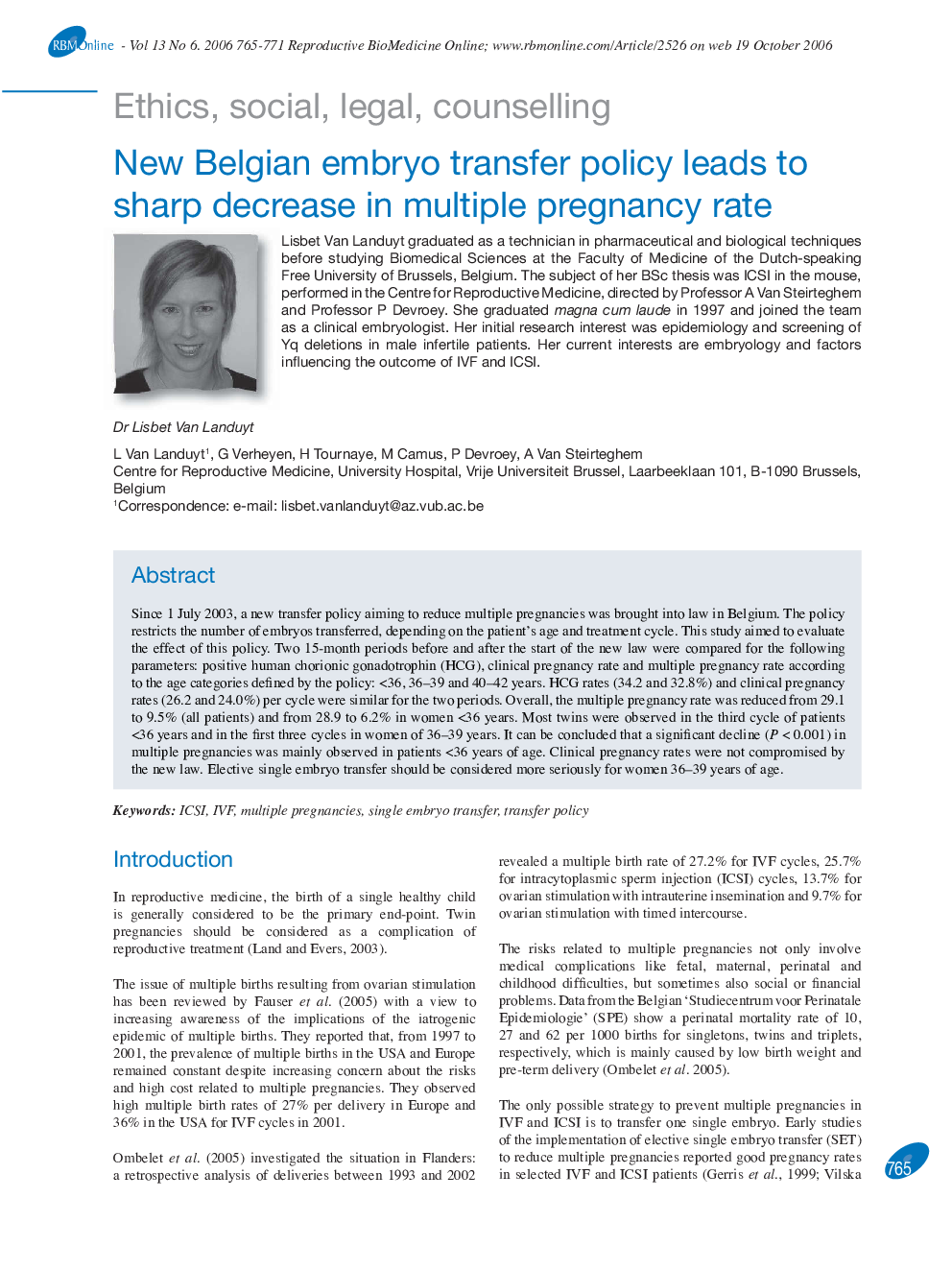| Article ID | Journal | Published Year | Pages | File Type |
|---|---|---|---|---|
| 3973388 | Reproductive BioMedicine Online | 2006 | 7 Pages |
Since 1 July 2003, a new transfer policy aiming to reduce multiple pregnancies was brought into law in Belgium. The policy restricts the number of embryos transferred, depending on the patient's age and treatment cycle. This study aimed to evaluate the effect of this policy. Two 15-month periods before and after the start of the new law were compared for the following parameters: positive human chorionic gonadotrophin (HCG), clinical pregnancy rate and multiple pregnancy rate according to the age categories defined by the policy: <36, 36–39 and 40–42 years. HCG rates (34.2 and 32.8%) and clinical pregnancy rates (26.2 and 24.0%) per cycle were similar for the two periods. Overall, the multiple pregnancy rate was reduced from 29.1 to 9.5% (all patients) and from 28.9 to 6.2% in women <36 years. Most twins were observed in the third cycle of patients <36 years and in the first three cycles in women of 36–39 years. It can be concluded that a significant decline (P < 0.001) in multiple pregnancies was mainly observed in patients <36 years of age. Clinical pregnancy rates were not compromised by the new law. Elective single embryo transfer should be considered more seriously for women 36–39 years of age.
